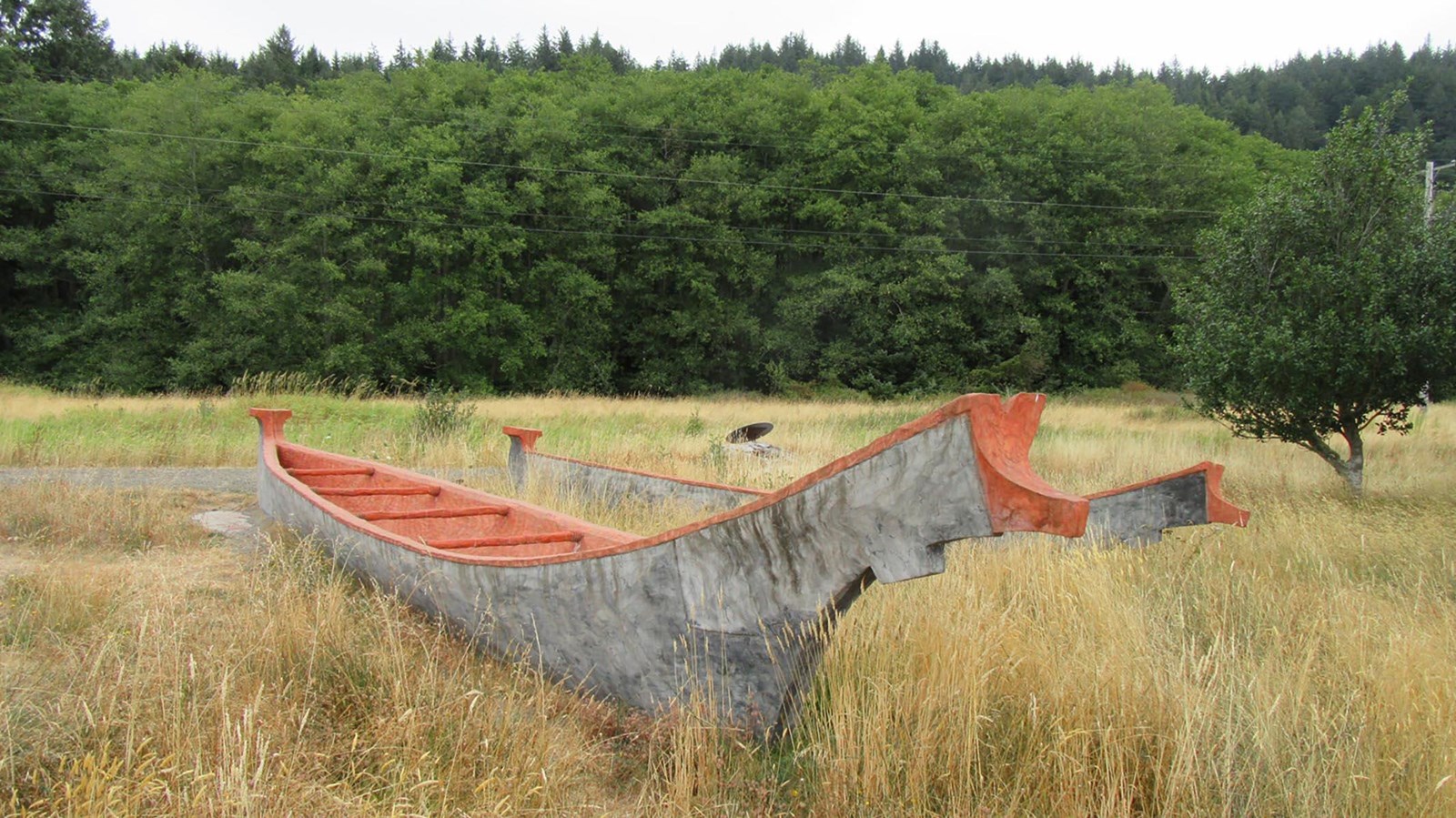Last updated: November 28, 2023
Place
The Vote at Station Camp

NPS
Benches/Seating, Historical/Interpretive Information/Exhibits, Information Kiosk/Bulletin Board, Parking - Auto, Trailhead
After reaching the Pacific Ocean, it was time to decide where to spend the winter. William Clark polled everyone on November 24, 1805, and tallied their votes in his journal.
Clark recorded the vote of York, a Black man he enslaved. This was decades before Black men had the right to vote in the United States. Several years after the Lewis and Clark Expedition, York asked for his freedom. Clark denied his request. How meaningful was York’s vote, if he still was not free?
Clark also asked Sacagawea’s opinion on where to stay over the winter. Her vote was not tallied, but Clark made a note that she wanted to stay somewhere with lots of wapato, to make sure they had enough food for the winter. The group decision did not heed her concerns, but her point played out: they spent much of the winter trading with the Clatsop for wapato and other food. And their health suffered at times when they had only dried salmon or spoiled elk meat to eat.
Ultimately, Lewis and Clark’s party decided to stay south of the Columbia River, where the Clatsop people lived and where there would be easy access to the ocean. The hunting would be good there, it was close to the ocean for salt-making, and they hoped the rain wouldn’t be as bad.
Sacagawea voicing her opinion in 1805 gained more attention a century later. The women’s suffrage movement used Sacagawea’s input at Station Camp as a symbol of why women deserved the right to vote. That right came at the national level in 1920 with the passage of the Nineteenth Amendment. However, barriers to suffrage still existed for people of color, including Indigenous women, until well into the twentieth century.
Sacagawea and York gave their opinions to the White men leading the expedition—an expedition that neither of them freely chose to join. But did their votes make a lasting difference for Black people, Indigenous people, or women?
About this article: This article is part of a series called “Pivotal Places: Stories from the Lewis and Clark National Historic Trail.”
Lewis and Clark NHT Visitor Centers and Museums
This map shows a range of features associated with the Lewis and Clark National Historic Trail, which commemorates the 1803-1806 Lewis and Clark Expedition. The trail spans a large portion of the North American continent, from the Ohio River in Pittsburgh, Pennsylvania, to the mouth of the Columbia River in Oregon and Washington. The trail is comprised of the historic route of the Lewis and Clark Expedition, an auto tour route, high potential historic sites (shown in black), visitor centers (shown in orange), and pivotal places (shown in green). These features can be selected on the map to reveal additional information. Also shown is a base map displaying state boundaries, cities, rivers, and highways. The map conveys how a significant area of the North American continent was traversed by the Lewis and Clark Expedition and indicates the many places where visitors can learn about their journey and experience the landscape through which they traveled.
